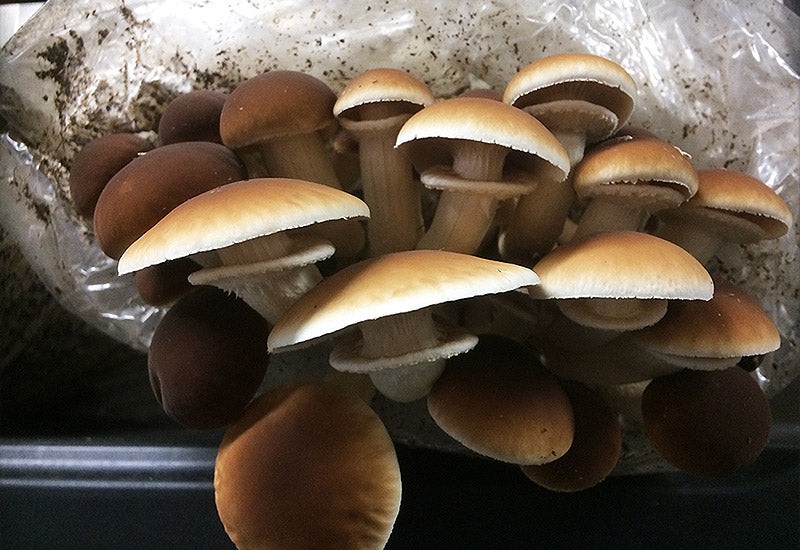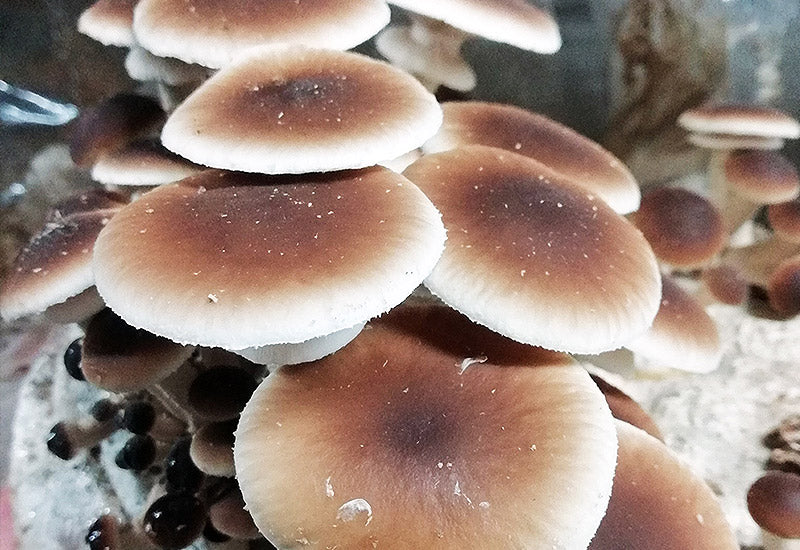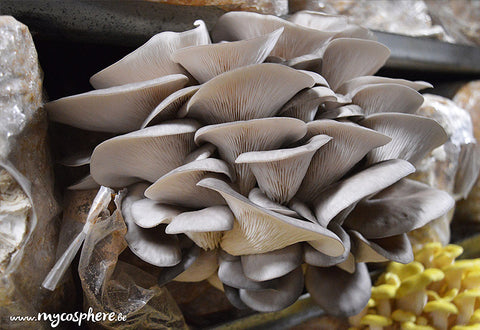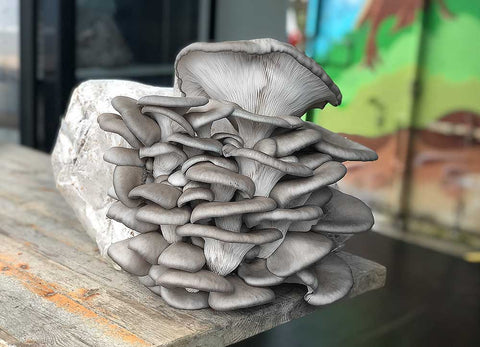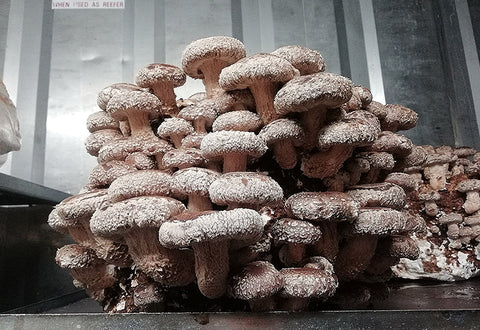Mycelium on organic Pioppino grain
- 🍄 MYCELIUM ON PIOPPINOS SEEDS: Cyclocybe aegerita, also known as poplar pholiote, appreciated for its crunchy texture and delicate flavor.
- 🌱 ENJOY THE HEAT: 18 to 25°C.
- 🍽️ EXCEPTIONAL TASTE QUALITY: Woody flavor and firm texture, perfect for enriching culinary dishes, especially stir-fries and soups.
- 🌍 LOCAL AND ORGANIC PRODUCTION: Certified “BE-BIO-01” by Certisys, guaranteeing an environmentally friendly and high quality product.
-
3-4 weeks. Consult all our deadlines
Cyclocybe aegerita, more commonly called Piopino or Poplar Mushroom, is one of the first mushrooms cultivated by humans. The Romans had already developed some primitive techniques for its cultivation. This mushroom often grows on piles of wood chips, especially poplar, but can also be found on other species such as elm, willow, alder, or elder.
Characteristics: It is an excellent edible mushroom with a crunchy texture and a slightly sweet taste reminiscent of hazelnut. The caps, measuring between 3 and 5 cm, are dark brown at first, then gradually lighten to cream-beige at maturity. The stems, if picked young, are not too fibrous and remain crunchy when cooked.
Storage: 1 month in the refrigerator.
👉 See also: "How to use our myceliums"
Our quality commitment:
We produce our myceliums under laboratory conditions, which guarantees purity of strains and optimal quality.
We produce our mycelia in a 100% organic way and all our products are certified "BE-BIO-01, Agriculture Belgium" by CERTISYS.

🌱 Growing conditions
This mushroom variety enjoys warmth, with optimal temperatures between 20 and 27°C, but it can also be cultivated at cooler temperatures down to 12°C. For better preservation and a more tender texture, it is recommended to harvest the mushrooms young, just before the caps open, as Piopinos grow very quickly.
🛠️ Substrates
Outdoors, Piopino can be grown on logs or piles of freshly cut wood chips. Indoors, it grows well on pasteurized wood sawdust.
We recommend our ready-to-use substrate, particularly suited for lignicolous varieties.
📊 Cultivation parameters
Inoculation: 5-10% grains/wet substrate
| Phase | Temperature | Moisture | Duration | CO2 | Fresh air | Light |
|---|---|---|---|---|---|---|
| Incubation | 21-27°C | - | 3-4 weeks | - | - | n/a |
| Primordia initiation | 15-20°C | 95-100% | 7-14 days | 2000 ppm | 4-8 volumes/h | 500-1000 lux |
| Fruiting | 18-25°C | 85-95% | 4-8 days | 500-2000 ppm | 4-8 volumes/h | 500-1000 lux |
📚 This data comes from the book "Growing Gourmet and Medicinal Mushrooms" by P. Stamets. It is provided for informational purposes only, as each mushroom grower has specific cultivation conditions, so individual variations may occur.
📈 Productivity
Yield: 150-200 g of fresh mushrooms per 1 kg of wet substrate, with 2 harvests at 10-14 day intervals.

